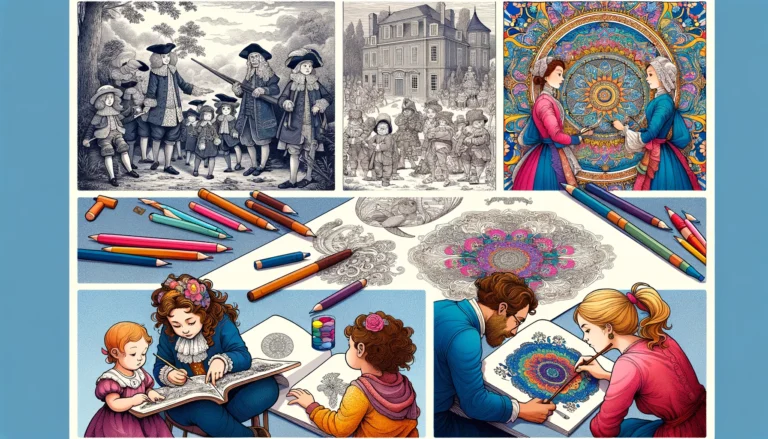Coloring books, a staple in children’s entertainment and adult relaxation, have a fascinating history that spans centuries. From their origins as educational tools to their current status as a global phenomenon for stress relief and creativity, coloring books have continuously evolved to meet the changing needs and interests of society. This article explores the key moments in the evolution of coloring books, tracing their journey from the past to the present.
The Early Beginnings
The concept of coloring books can be traced back to the 17th century when mapmakers and printers produced outline maps and illustrations for students to color in as a learning tool. These early forms of coloring books were educational and intended to enhance the learning experience of young students by making lessons interactive and engaging.
The 19th Century: The Emergence of True Coloring Books
The first true coloring books appeared in the 19th century, with the advent of the lithographic printing process, which made book production cheaper and more accessible. One of the earliest examples is “The Little Folks’ Painting Book,” published in the 1870s by the McLoughlin Brothers, a New York publishing firm. These books featured line drawings intended for children to fill in with watercolors, marking the beginning of coloring books as a form of entertainment.
The 20th Century: Coloring Books for All Ages
During the 20th century, coloring books became a popular pastime for children, with themes ranging from animals and fairy tales to characters from popular culture. The Disney company was instrumental in popularizing coloring books by producing books featuring Mickey Mouse and other Disney characters, making them a staple in households around the world.
In the mid-20th century, coloring books also began to be used for political and social purposes. They were employed as propaganda tools during wartime and for social commentary during the civil rights movement, illustrating the medium’s adaptability to convey complex messages in an accessible format.
The Adult Coloring Book Renaissance
The 21st century witnessed a renaissance in adult coloring books, sparked by the publication of highly detailed books like “Secret Garden” by Johanna Basford in 2013. These books featured intricate designs and themes that appealed to adults, offering not just a nostalgic return to childhood but also a form of stress relief and creative expression. The trend quickly gained momentum, with adult coloring books topping bestseller lists and being sold in millions worldwide.
The Role of Technology
With the rise of digital technology, coloring books have also transitioned into the digital realm. Apps and online platforms now offer virtual coloring experiences, allowing users to color intricate designs with the click of a mouse or the touch of a screen. This digital evolution has made coloring more accessible and convenient, catering to the modern user’s lifestyle while still providing the therapeutic benefits associated with traditional coloring.
Coloring Books Today
Today, coloring books cover a wide range of themes and complexities, catering to diverse audiences. From simple cartoon characters for children to elaborate geometric patterns and nature scenes for adults, coloring books continue to be a versatile and beloved medium. They are used not only as tools for relaxation and creativity but also as educational aids, therapeutic tools, and even marketing and promotional materials.
Conclusion
The history of coloring books is a testament to their enduring appeal and versatility. What began as a simple educational tool has evolved into a multifaceted medium that transcends age, culture, and time. Coloring books have adapted to the changing dynamics of society, reflecting historical events, technological advances, and cultural trends. As they continue to evolve, coloring books remain a beloved pastime, offering joy, relaxation, and a creative outlet to people around the world.
